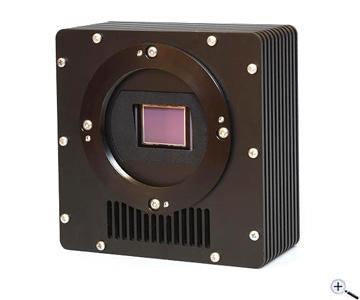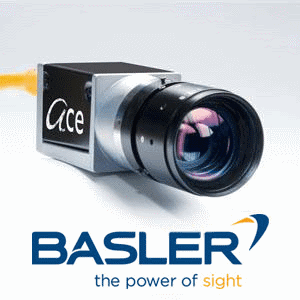- Starlight Xpress Filter Wheel & OAG Review Light and slim with thumbscrews for quick and easy swapping of filter disks without tools. Quiet in operation and the Hall-Effect 3-bit encoded positioning gives precise filter locations (not serially sequential) so you can easily swap between any filters without accidentally losing the wheel position.
- Choose 'Browse for Drivers' within the directory you downloaded Select the 32-bit or 64-bit driver folder within that directory Click 'OK', 'Next' then accept to install the driver The Windows Device Manager should now show a Starlight Xpress CCD If you use the 10m amplified USB extension, first plug it in without the camera.
- Starlight Xpress MX drivers included in SX? #137 To anybody with USB 2.0 interface box - even if it is not yet fully tested it seems that this kind of interface can be used with INDI SX driver (revision 918 or later).
Starlight Xpress Universal
For this driver, please select SX Universal on the Setup tab.
Windows Driver Package - Starlight Xpress Ltd SXCCD Driver ( 12.32.11.916) is an application by Starlight Xpress Ltd. Frequently, people choose to remove it. This can be hard because deleting this manually takes some know-how regarding PCs.
This driver operates any Starlight Xpress USB camera. Tbs dtv input devices driver download for windows 10. It operates the SXV-series USB 2.0 cameras and the SX AO unit. It can also be used to operate USB 1.1 cameras, using special firmware (see below). This is the only driver that supports operating two separate SX USB cameras simultaneously (one as guider).
Connect To shows a list of the cameras that are currently connected to the PC. Select the camera you wish to connect to. If no cameras appear in the list, make sure the camera is connected and installed, and then close and re-open the camera settings dialog. MaxIm DL scans for connected cameras whenever this dialog is opened.
If the camera still does not appear, click the Advanced button to bring up the SX Universal Settings dialog, and click the HEX File Manager button to invoke the Starlight Xpress Hex File Utility and install the SX Universal camera firmware (HEX file). The SX Universal firmware will operate any Starlight Xpress USB camera. Note, however, that it may not be compatible with vendor-supplied and third party software (and the camera-specific drivers built into MaxIm DL). You can use the hex file utility to switch back to the original firmware at any time.

Starlight Xpress Drivers
Guider should be set to No Guider if you are not planning to use this camera for autoguiding. Set it to STAR2000 for MX series cameras when you want to use the STAR2000 single-chip autoguiding. Note that this mode cuts the effective exposure time in half. For cameras with secondary guide heads, set it to Guide Head. You can also select Swapped Head, in which case the main chip becomes the autoguider, and the guide head becomes the main camera.
A special Guider mode, Binned 1x2, is provided for users of MX5 cameras. These cameras have highly rectangular (i.e. non-square) pixels, which are not ideal for autoguiding. When they are binned 1x2 (meaning that adjacent rows are binned together, in the vertical direction) the pixels are much closer to being square.
Note: If using both the main camera and the guide head you must turn on the Dual Chip Mode check box on the Setup tab; this tells MaxIm that the two CCD's are controlled through the same camera driver. If you're using the guide head as a stand alone guider (i.e. only the guide head is connected) select SX Universal as the guide camera on the Setup tab, and set Guider to Swapped Head.

The Camera Model indicates the model that is assigned to the camera when MaxIm DL connects. The special option Do Not Assign indicates that no model # should be assigned, and should be used with new cameras whose name does not appear in this dropdown. Use of any other setting will override the reported model and capabilities of the camera selected in the Connect To dropdown. Unless the camera is a USB1.1 camera, it will remember the newly assigned model after power is cycled.
Use the Select AO setting to enable control of a Starlight Xpress AO unit. Set this to Disabled if no AO unit is present. Otherwise, select the COM port to which the AO unit was connected. When the driver controls an AO unit, a separate SX AO Control Window will appear.
The cooler controls are available for SXVR cameras with firmware v1.14 or later. Older Starlight Xpress models use open-loop cooling, so the cooler controls are not enabled for these.
The SX Universal Settings dialog is displayed when you click on the Advanced button of the Setup SX Universaldialog.
The Show Progress During Readout setting can be used to disable progress bar updates during image download. Doing so can prevent horizontal streaking caused by pauses in the readout.
Starlight Express Ccd
Swap Even & Odd Rows will reverse the interleaved rows. Certain camera models output the rows in the reverse of the normal order; this switch can correct that.
Enable Progressive Downloads will turn on the progressive download mode, instead of the interleaved download mode. This doubles the effective exposure time, but due to the download time may result in a slightly different exposure for the even and odd rows.
In some modes certain MX cameras may produce a 'venetian blind' effect, which will appear as bright and dark lines across the image. To compensate for this effect, check the Apply Venetian Blind Correctionsetting. We recommend turning this off if no venetian blind effect is present.
The HEX File Manager button brings up the Starlight Xpress Hex File Utility. This is used to configure old USB 1.1 camera models to work with SX Universal.
Availability of this feature depends on Product Level.
SX26C under INDI?
Ascom Filter Wheel Software

Starlight Xpress Drivers
#110358 Hi all, I have had an SX26C for several years, but rarely used it. I tried it tonight, as I was hoping to use it with a new telescope. I now use the INDI ecosystem, which works very well with my SX694/Ultrastar combo. When I tried taking some short test frames using the INDI driver, the server recognised the camera (as an SXVR-M26) but the resulting FITS is a strange mess. The mount was guiding, even though the few stars are smeared, and the overall picture looks rather modernist - just not what I want! Before I start trying build a bench set-up to see if I can investigate off the telescope, has anyone any ideas, please?. I realise that the SX26 is a rare beast and not easy to use - hence why mine has lived on the shelf. It may be that trying to use it under INDI is a non starter but I'm willing to have a go to see if I can get something from my initial investment. Regards Tim. |
#110359 Hi Tim, Tim Brandt wrote on 20201228: Hi all, I have had an SX26C for several years, but rarely used it. I triedThat looks weird indeed. Some wrong readout setting probably. But what ? The mount was guiding, even though the few stars are smeared, and theThe SXVR-M26C is listed in the source code at https://github.com/indilib/indi-3rdparty/blob/e50319b95396e76d9f83d3f18c3d96b0a3427ffe/indi-sx/sxccdusb.cpp#L148 So it is at least known. I had expected it to work. The original author of the INDI driver is Cloudmakers, but they no longer support it and instead work on their own competing INDIGO system. See https://www.cloudmakers.eu/indi/ But not all is lost, I propose to post this Light_017.fits to the INDI forum at https://indilib.org/forum/ccds-dslrs.html and ask for help there. I'm sure it can be fixed. -- Hans |
#110361 Thanks, Hans. I've duplicated the problem with another laptop, Both are running v1.1.13 of the indi-sx-ccd driver. Interestingly, the Y Pixel Size is reported incorrectly as 3.02 microns, not 6.04 as the X Pixel Size is, but the other parameters seem OK. The camera is (sort of) working under ASCOM - at least I can get an image. I cannot try Starlight Vision as it crashes every time it completes downloading an image (on 2 different Windows computers). I'll keep on experimenting. Kind regards Tim |
#110362 As you probably know, the M26C has a very unusual CCD structure, and so only a few imaging programs can decode it successfully. Our ‘Starlight Vision’ doesn’t support it, but the older software at https://www.sxccd.com/downloads/sxv_M26C_usb.zip works well. Other known good programs are Nebulosity and MaximDL, but I don’t think that INDI has full support for it. Regards, Sent: Tuesday, December 29, 2020 3:15 PM Subject: Re: [StarlightXpress] SX26C under INDI? Thanks, Hans. I've duplicated the problem with another laptop, Both are running v1.1.13 of the indi-sx-ccd driver. Interestingly, the Y Pixel Size is reported incorrectly as 3.02 microns, not 6.04 as the X Pixel Size is, but the other parameters seem OK. The camera is (sort of) working under ASCOM - at least I can get an image. I cannot try Starlight Vision as it crashes every time it completes downloading an image (on 2 different Windows computers). I'll keep on experimenting. Kind regards Tim |
#110363 Hi Tim, Tim Brandt wrote on 20201229: Thanks, Hans. I've duplicated the problem with another laptop, Both areThat is useful info for debugging this issue. I see you have not made an INDI forum post yet, are you still planning to ? Or do you prefer that I make one on your behalf ? -- Hans |
#110364 Thanks, Terry. I have checked and it is working under the software you suggest. It will be a shame if I can't get it to work under INDI. Can you give any tips for reading the CCD? I do not really real up to writing an INDI driver, but might give it a go if there is a reasonable chance of success. Regards Tim |
#110365 The problem is that I have forgotten a lot of the details myself! It’s at least 10 years since I designed the camera. I will see if I can find some useful info. for you. Regards, Sent: Tuesday, December 29, 2020 4:54 PM Subject: Re: [StarlightXpress] SX26C under INDI? Thanks, Terry. I have checked and it is working under the software you suggest. It will be a shame if I can't get it to work under INDI. Can you give any tips for reading the CCD? I do not really real up to writing an INDI driver, but might give it a go if there is a reasonable chance of success. Regards Tim |
#110366 Thanks, Hans, I've put the question on the indi forum. Kind regards Tim |
#110367 Another program that has an own driver for the M26C as well as ASCOM compatibility is AstroArt. Not sure if it works with INDI |
#110368 Edited I had the same problem a few years back with the SXVR M25c, and with help from Terry and Jasem the INdI author we solved it, and now works perfectly, so the issue was solved, and works in the latest INdI versions fine. 👍🏼👍🏼 |
#110369 Terry toggle quoted messageShow quoted textSent: Wednesday, December 30, 2020 9:45 AM Subject: Re: [StarlightXpress] SX26C under INDI? Thanks, Hans, I've put the question on the indi forum. Kind regards Tim |
#110370 Did you see my message above Terry, as I had this issue with My M25c and you helped me and one of the INdI authors solve it, about two years ago..all works fine now, or are the M26 and M25 more different than just the pixel size..?? |
#110371 Yes, I saw it, but the M26C is very different to the M25C, so the mods for the M25C are not relevant to this chip. It reads out in a very different way. Regards, Sent: Wednesday, December 30, 2020 2:59 PM Subject: Re: [StarlightXpress] SX26C under INDI? Did you see my message above Terry, as I had this issue with My M25c and you helped me and one of the INdI authors solve it, about two years ago..all works fine now, or are the M26 and M25 more different than just the pixel size..?? |
#110372 |
#110373 Terry Platt wrote on 20201230: Did you receive the code that I sent yesterday?That sounds very useful ;-) Can someone add that code to this post https://indilib.org/forum/ccds-dslrs/8502-indi-indi-sx-ccd-driver-and-sx-26c-camera-problem.html so that it can be used to add support for the SX26C to the INDI driver ? I can help with that if noone steps up. -- Hans |
#110374 Hi Hans, toggle quoted messageShow quoted textPlease let me have your email address and I'll send it along. Regards, Terry -----Original Message----- From: Hans Sent: Thursday, December 31, 2020 12:04 AM To: main@StarlightXpress.groups.io Subject: Re: [StarlightXpress] SX26C under INDI? Terry Platt wrote on 20201230: Did you receive the code that I sent yesterday?That sounds very useful ;-) Can someone add that code to this post https://indilib.org/forum/ccds-dslrs/8502-indi-indi-sx-ccd-driver-and-sx-26c-camera-problem.html so that it can be used to add support for the SX26C to the INDI driver ? I can help with that if noone steps up. -- Hans |
#110375 Hi Terry, Terry Platt wrote on 20201231: Please let me have your email address and I'll send it along.Thanks, I've added it to the forum thread. Should prove very useful. -- Hans -----Original Message----- From: Hans |
#110380 Hi, Terry, thank you very much for your support. So far there has been no apparent progress on the INDI forum, so I've spent the last few days trying to go though the code you sent me and the existing INDI driver code. I am not a software engineers, but I think I can see where some of the issues in the INDI driver are coming from, and using the work that was done on the SX-25C I can see how they made an exception for that model. However, I'm still struggling to understand how the SX-26C is being read and then decoded. Can I check understanding with you please? If I have got it right, the initial download from the ICX493 is done through the calls shown in the Starlight Xpress USB Programmers Reference Manual. However, two calls have to be made to read the odd columns, then the evens. This results in two arrays, one containing the odd and other the even columns. These are organised with the the pixels by column rather than by row. During the decode, the two arrays are first combined so that they form a single array, but with the horizontal and vertical axes switched. Then the axes are swapped to derotate the image. The functions in the 'ICX493_Issue2' file are called with pointers to 4 arrays - the final derotated output array, the two input arrays and the intermediate rotated array. Have I got this reasonably right? If not, what am I missing? Also, I do not understand the three lines in 'Reading the M26C' in both the Receive OddBlock2 and Receive EvenBlock2 functions: If Bin% = 2 Then Readcount& = 10202400: BinH& = 1: BinV& = 1 If Bin% = 0 Then Readcount& = 2550600: BinH& = 4: BinV& = 1 If Bin% = 4 Then Readcount& = 637650: BinH& = 8: BinV& = 2 Kind regards, Tim |
#110399 Hi, any news on this yet, as I use INdI software all the time with my M25c, but am looking at getting the M26c with the smaller pixel..but need to know it will work..? cheers stewart |
#110400 Hi Stewart, no news yet. Unfortunately, I've been occupied by a couple of other topics, including a DIY rotator. If all goes well, I'm hoping to try modifying the INDI driver along the lines given by Terry, probably next week. II'm not a software developer by training, so need to take fairly baby steps. I have an old lap top set up as a development environment but so far I've only made very small tweaks to drivers. Wish me luck. Regards Tim |

